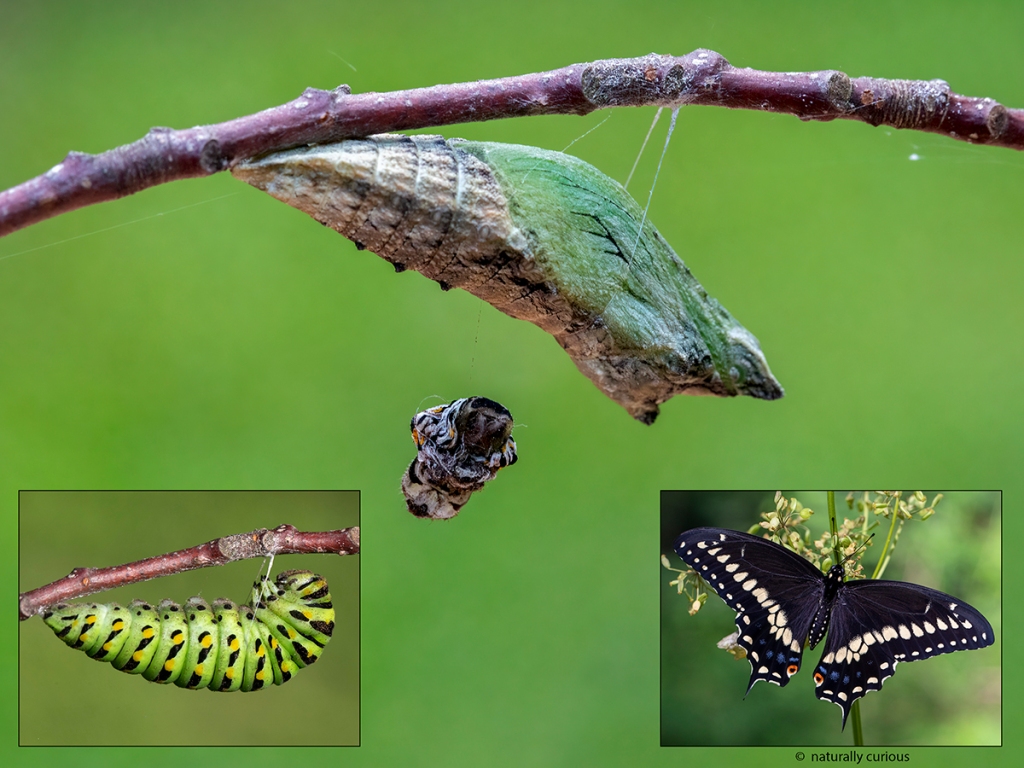2nd Brood of Black Swallowtails Emerging

The process of transforming from a caterpillar to a chrysalis is a miraculous one, but it’s especially intriguing when it comes to Black Swallowtails (Papilio polyxenes). For one thing, their chrysalises vary in color from green to brown, depending on the object on which they choose to attach themselves. Equally impressive, while it is still a caterpillar the Black Swallowtail spins a thread of silk from which it suspends itself. It uses this silk sling as support for the chrysalis that is revealed once the caterpillar splits and sheds its exoskeleton (see it dangling beneath the chrysalis).
The second brood of Black Swallowtails (Papilio polyxenes) is already emerging from their chrysalises this summer, mating and laying eggs during their two week adult life span. Look for the caterpillars dining on members of the Parsley family, including Queen Anne’s Lace, dill, parsley, fennel, celery and carrot foliage. (Photos from left to right: Black Swallowtail larva preparing to pupate, chrysalis (with cast off larval exoskeleton) and adult male Black Swallowtail)
Naturally Curious is supported by donations. If you choose to contribute, you may go to http://www.naturallycuriouswithmaryholland.wordpress.com and click on the yellow “donate” button.
This entry was posted on July 5, 2022 by Mary Holland. It was filed under Black Swallowtail, Butterflies, Chrysalises, Insects, July, Larvae, Lepidoptera, Metamorphosis, Uncategorized .


















Love these caterpillars! Have taken so many photos of them. At least past two years haven’t seen any. We have several Fennel plants, Rue, plenty of Dill, 18 Parsley plants…I keep checking. Have seen a few Moms.
July 5, 2022 at 9:28 am